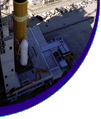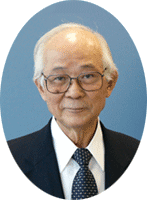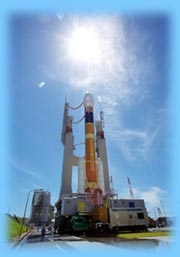 |
 |
 |

|
 Setsuro Sekiya Setsuro Sekiya
Director,
Office of Reliability Promotion and Evaluation,
Japan Aerospace Exploration Agency

The Office of Reliability Promotion and Evaluation consists of
six specialists recruited not only from the field of space development, but
also from various other industries, such as automotive, airplane, and electronics.
Our mission is to pool our different resources and make recommendations for
improving reliability at JAXA. We believe that, since not all of us are specialists
in space development, we can sometimes see things more objectively. Based on
our outside experience, we are hoping to be able not just to make useful proposals,
but to explain the background behind them as well, such as when and what should
have been done, why something could not have been done, and what needs to be
done next.
|

First
we studied in detail a great number of reports on JAXA's space development projects.
Then we met with project managers, visited manufacturers and the Tanegashima
Space Center, and observed operations towards the resumption of rocket launching.
We have submitted a second report to the president of JAXA. At the Tanegashima
Space Center, we were also able to observe a flame test and its results.
|

The first thing we realized was the difficulty of space research
and development. We truly became aware of the enormous challenges of ensuring
success while many questions remain unanswered. More than a year has passed
since the failure of H-IIA F6. I believe the staff who have been involved in
this project have gained very valuable experience in design, testing and demonstration,
production methods and manufacturing, and the very challenging stage of decision
making.
Beyond space development, we all learn a lot from our mistakes. By
finding the core causes of mistakes, we can prevent the same problems from happening
again. At the same time, it is important to find new ways to prevent new, unrelated
mistakes. It is not extreme to say that if you have not experienced failure,
you will not be able to plan or carry out a project reliably.
|
 
When you are faced with difficulty, it is important to clarify
what you are really working towards, and to focus on that goal. For us, the
key is to fully understand JAXA's mission, and the overall goals of space development
in Japan. It is also important to remember who the customers are. Our customers
are the Japanese people, and people from other Asian countries, who receive
the benefits of what we are doing. This includes: the collection and distribution
of valuable information about global environmental issues; developing safety
measures for disasters such as earthquakes and tsunami; communications, broadcasting
and navigation applications - the benefits are limitless.
To accomplish these
missions, we need first to understand and share the goals of "what can
be done" and "what should be done." Then, each department, from
research, to design and development, to production, to satellite operations,
to public relations, etc., has to clarify its duties down to the individual
level. I believe this motivates the staff and encourages them to take pride
in their work. We are fortunate to be able to dedicate ourselves to such missions.
|

There is a limit to what a country can do on its own, but when
countries collaborate, we can achieve results on a global scale. At the same
time, international competition in technology is also important. Pooling together
all the might of JAXA, domestic manufacturers, and other related organizations,
we must aim to become number one in the world in the reliability of our satellite-launching
operations. I am aware that this is very difficult to accomplish with current
budget restrictions and the limitations on the number of launches. However,
judging from my direct experience with JAXA, there are many competent staff
and motivated young people. We need to think carefully, design well, and manufacture
excellent products. To accomplish this, further development in research, technology,
methodology, and personnel is necessary. It may take time, but I believe that
in space development, steady continuity of thought and continuous improvement
are necessary.
As members of the Office of Reliability Promotion and Evaluation,
we continue to devote ourselves to making Japan's space program world-class.
|
| Members of the Office of Reliability Promotion
and Evaluation |
Setsuro Sekiya, Director
Born
in 1930, graduate of Nagoya University, Mechanical Engineering Department, School
of Engineering. Was with Toyota Motor Corp. from 1954 to 1989, working in industrial
machinery design, production technology, engine design, plant management and
inspection, technology development, and quality assurance/TQC. His positions
there included: Director; Deputy Branch Manager of the Tokyo branch, quality
assurance/customer relationship management, Tahara Plant Manager. President and
Chairman of Araco Corp., 1989-99. Vice Chairman/Chairman of the Central Japan
Quality
Control Association, 1994-2004. |
| Masahiko Saito |
formerly of JAL |
| Masaru Fukuoka |
formerly of Hitachi Ltd. |
| Katsuhiko Sato |
formerly of MHI Guidance & Propulsion Systems Works |
| Shiro Yamagata |
Chief Engineer, JEM Development and Operation Project, JAXA |
| Toshitaka Tanahashi |
Denso Corporation |
|
|
 |
 |

